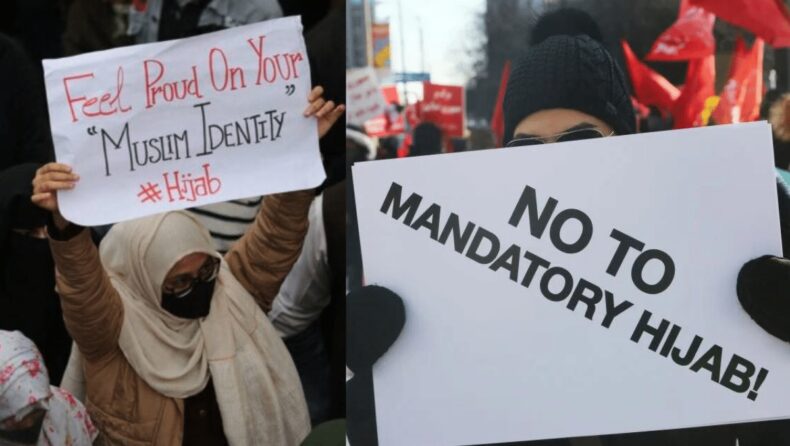The sad reality surrounding women in the 21st century

The modern-day depiction of the ‘hijab’ is a headscarf worn particularly by women following Islam. This very literal social understanding of the hijab takes a lot away from its true meaning in my opinion.
Hijab is a word taken from the Arabic script which means ‘Parda’ or ‘curtain’. While we are very used to having an understanding of anything from its theoretical stance, what we don’t realize is hijab has all its existence in society because it is mentioned in Quran, the Islamic sacred book.
So, as more and more public interests increase around this particular topic due to the related political issues around it across the world, it doesn’t remain just an inter-racial issue but a humanitarian crisis.
As daily consumers of news, we are forced to formulate a conclusion of what we are provided with through different forms of media. Therefore, it becomes necessary for us to have a basic comprehension of an issue that is this sensitive as well as important.
Let us see what hijab row means in Quran.

In Quran, the word hijab row has a depiction that is not surface level but deeper than it appears to us. Quran refers to the hijab as an act of faith in God. It includes the Hijab of body, sight, thought, intention, and conduct. Hijab according to Quran applies to both men and women.
Women are told by Quran to hide their bodies from someone who isn’t aware and conscious of the concept of the nakedness of the body. It also asks men to draw a hijab to their sight and thoughts while they see a woman. Men are expected to have respect and purity when they look at women.
Well, the most literal aspect of the hijab row which we are used to seeing is called ‘Khimar’ in Quran which is now commonly misinterpreted as hijab.
Along with the other aspects of the Hijab row, there also lies a specific dress code for both Islamic men and women. But now it has only become a culturally adopted excuse to raise a fight against women by misogynistic conservatives.
The most obvious example to which is the recently witnessed hijab row that took place in India and Iran and is ongoing.
What I absolutely cannot ignore is the unusual presence of both a metaphor as well as and irony besides the very evident alliteration of ‘I’ which makes it all the more interesting.
The irony is that while in India women are fighting for their right to follow their cultural practice of willingly wearing a hijab, Iran is witnessing mass protests by women against the atrocities of the Iranian government put on them for vandalizing the official dress code laws set by the morality police.
Read about India’s ban on hijab: https://www.npr.org/2022/03/15/1086602745/india-court-upholds-ban-on-hijab-in-schools-and-colleges
Read more on Iran’s anti-hijab protests: https://tdznkwjt9mxt6p1p8657.cleaver.live/anti-hijab-protests-taking-place-across-iran/
The metaphor in this case speaks the loudest as it represents the feminine race and its centuries-old problems that don’t seem to go anywhere even in the 21st century. The metaphor drawn here is ‘women’ and ‘injustice’ against them. Sometimes the excuse is religion, the other time it’s her clothes.
The alliteration here is not that deep but adds so much more to just a debate. The presence of ‘I’ to me screams the pain of so many more India and Iran and their women population.
In my opinion, something like clothes can never be more important and serious than what lies inside of them. Underneath lies a woman, a mother, a wife, a daughter, a sister, and a friend. A human being that holds the entire universe inside her womb.
I think self-recognized women are cerebrally no less than a self-recognized men, at least there is no practical evidence that says otherwise. So, the fact that ‘modern’ society should let women decide for themselves is a very legitimate argument.
It is an inborn right of a woman to enjoy free speech and independent decision making taking into consideration her unique interests and beliefs.
Drawing context from today’s topic, I believe that a woman should be able to decide whether she wants to wear a hijab or if she is better off without that. If she feels the need to dress a certain way to achieve spiritual integrity, she holds no explanation for any living being on earth. Similarly, if she doesn’t want to cover herself and that is not something that aligns with her idea of individuality, nobody has the right to question her.













